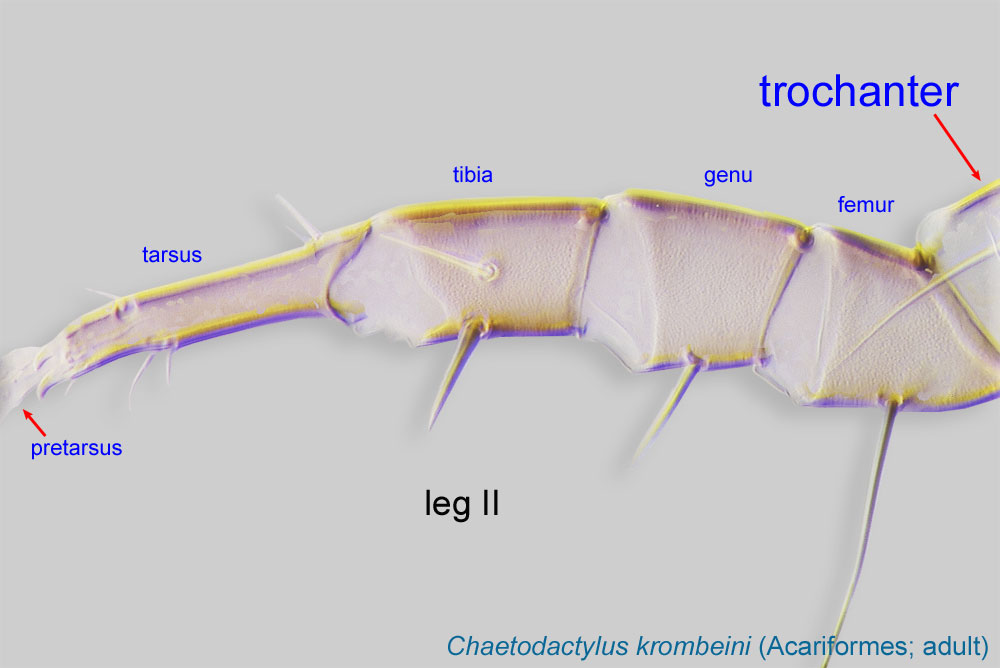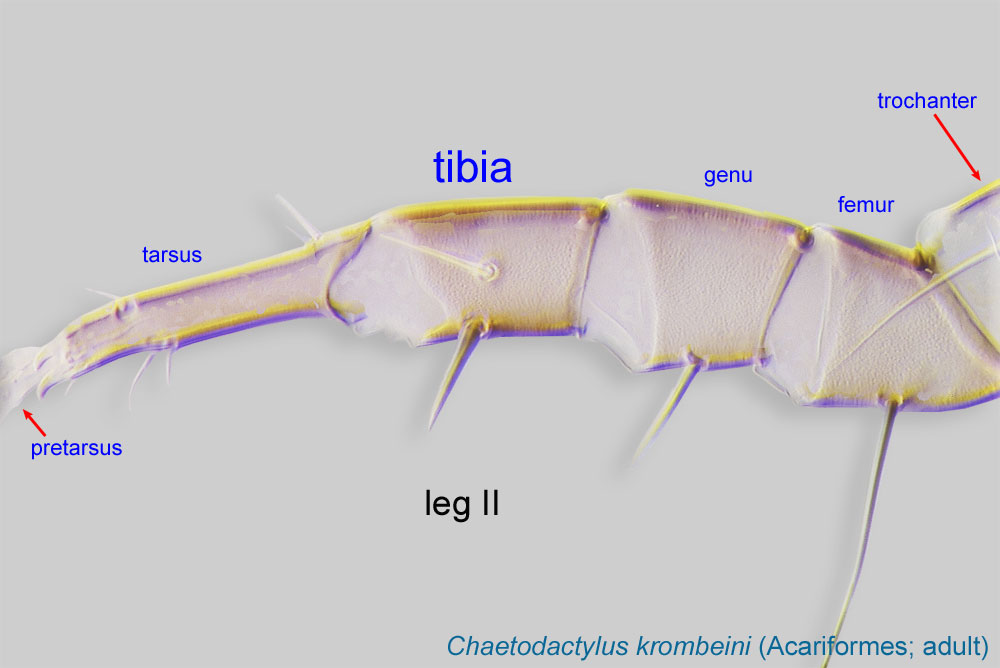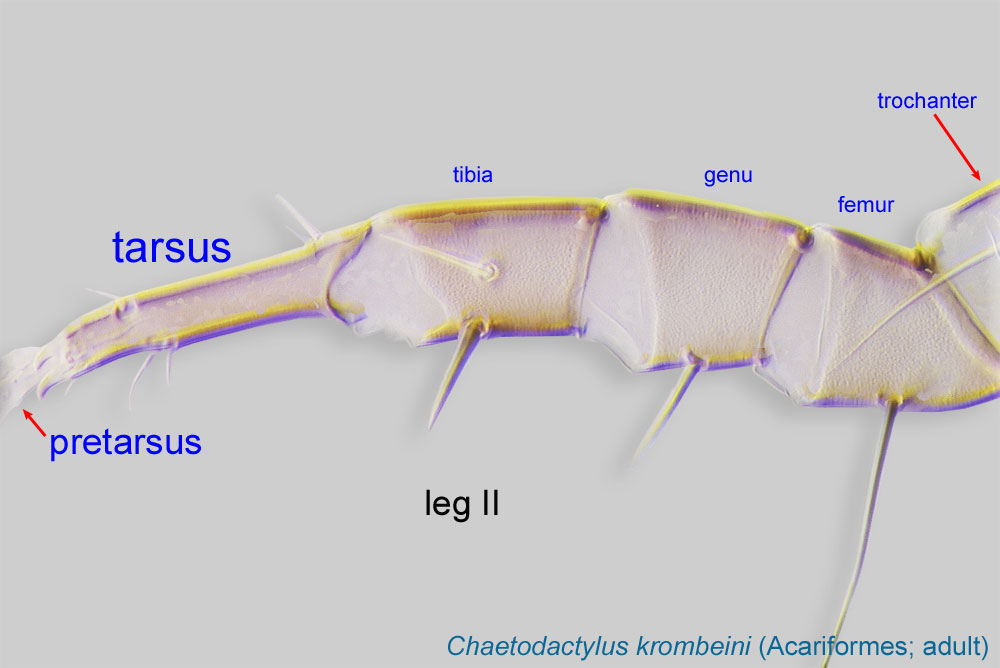lives in bee nests and disperses on adult bees, but its effect on bees is unknown
Parascutacarus Baker and Delfinado, 1975
Superorder Acariformes » Order Trombidiformes » Suborder Prostigmata » Infraorder Eleutherengona » Hyporder Heterostigmata » Family Scutacaridae » Genus Parascutacarus
Parascutacarus indicus Baker and Delfinado, 1975
Female: Setae c2 long, strong, pectinate (similar to long leg setae) (Fig. 1). Setae c1 absent (Figs. 1, 3). Setae ps3 displaced ventrally (not submarginal) (Fig. 2). Large hooked claw present on tibiotarsus I (Fig. 2). Trochantertrochanter:
Leg or palp segment (also known as podomere or palpomere) between femur and coxa. In Acariformes this is the most basal movable leg segment (or podomere) forming a joint with the body.
 IV simplesimple:
IV simplesimple:
Of claws or setae; not modified or not bi- or trifurcate at tip.
, not modified (Fig. 2). Tibiatibia:
Leg or palp segment (also known as podomere or palpomere) between tarsus and genu.
 and tarsustarsus:
and tarsustarsus:
Terminal segment (also known as podomere or palpomere) of legs or palps. In Parasitoformes it can be subdivided into telotarsus and basitarsus.
 IV not fused (Fig. 2). Empodiumempodium:
IV not fused (Fig. 2). Empodiumempodium:
Here used only when empodial claw is not claw-like, i.e., it is pad-like or membranous.
IV suckerlike, without claws (Fig. 2).
This genus has only one species, Parascutacarus indicus.
India
While originally described from a single specimen collected from unidentified species of Bombus, we collected a large series of this mite from the halictid bee Lasioglossum albescens, and this is probably the true host of Parascutacarus.
permanentpermanent:
associated exclusively with bees or their close relative, wasps; cannot live without these hosts